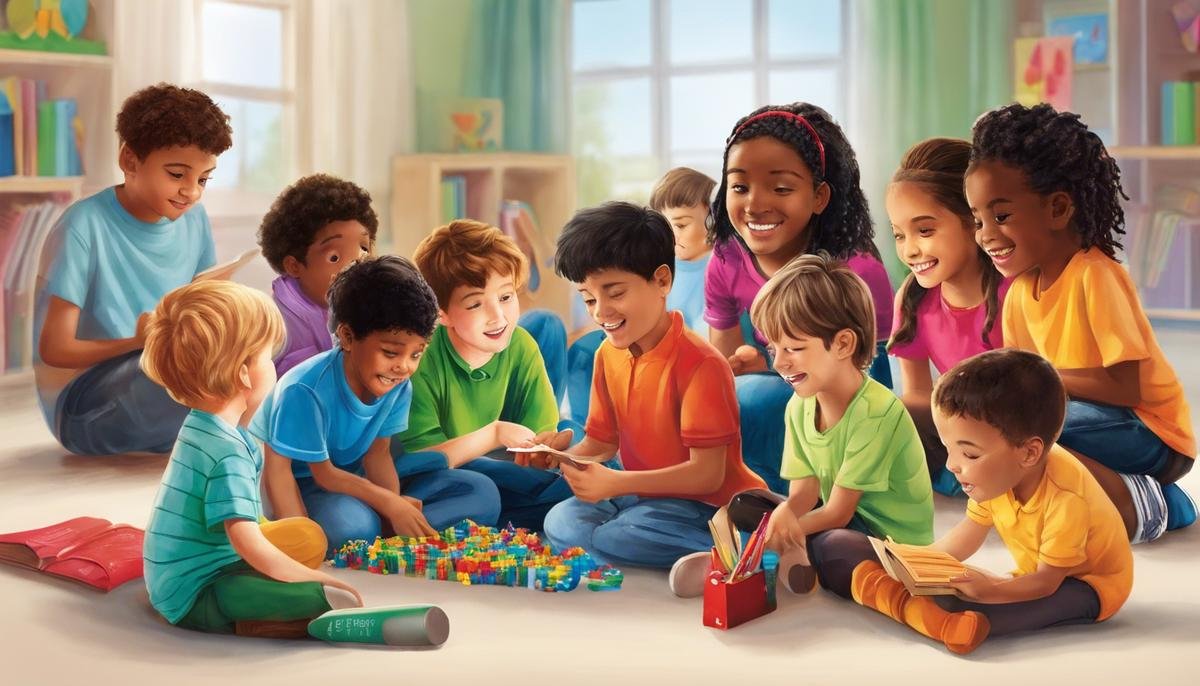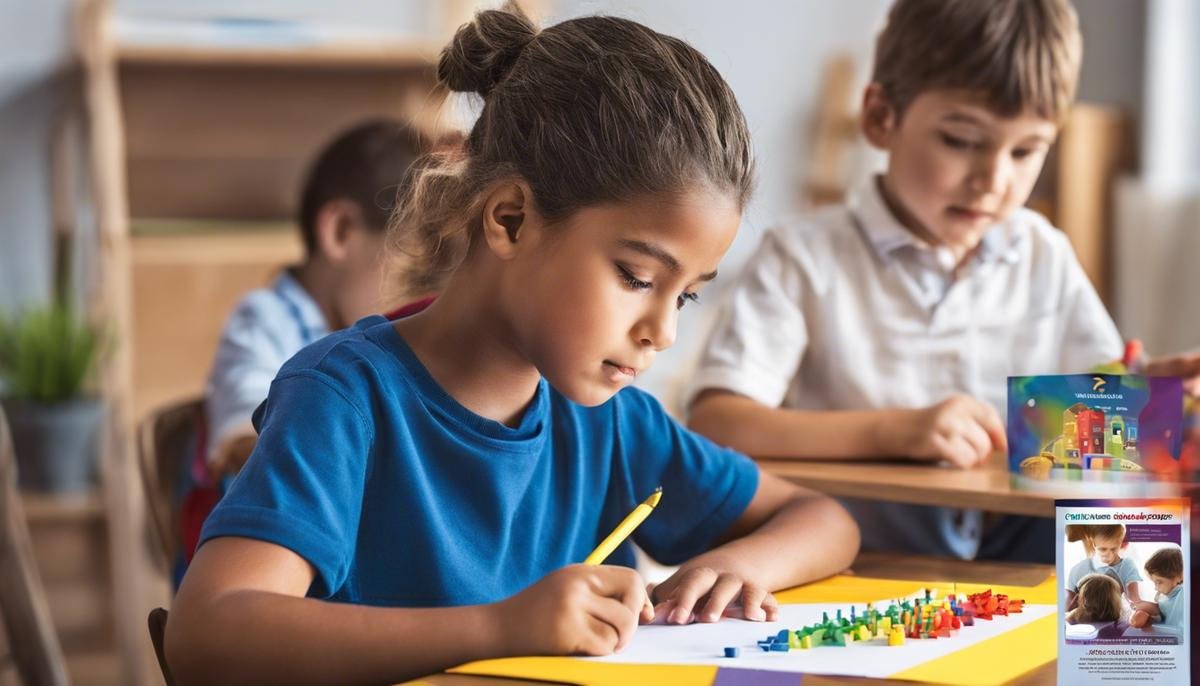
Navigating the landscape of developmental differences such as autism and dyslexia can be a challenging journey, laden with complexities and nuances that both enrich and complicate our understanding. Amidst this terrain, parents and caregivers strive to ensure their children receive accurate diagnoses and the subsequent supportive measures that cater to their unique needs. Exploring the core symptoms and behaviors of both autism and dyslexia is more than an academic exercise; it is a vital first step in distinguishing between two inherently distinct conditions that can significantly shape a child’s life. As we embark on this educational expedition, our goal is to shed light on the subtleties of each condition, the hurdles encountered in the diagnostic process, and the profound implications of handling these diagnoses with precision and care.
Understanding Autism and Dyslexia
Navigating Our Understanding of Autism and Dyslexia: Core Characteristics Parents Should Know
When it comes to raising a family, every child adds a unique blend of color to the tapestry of daily life. Understanding each thread, especially when it comes to conditions like autism and dyslexia, is key to nurturing a supportive home environment. In this cozy corner of the web, let’s explore the core characteristics of autism and dyslexia – because knowing more means loving better!
First up, autism, also known as autism spectrum disorder (ASD), is not a one-size-fits-all label. It’s a spectrum, and that means every child can experience it differently. However, certain traits are notably common in children with autism:
- Social Communication Challenges: Many children with autism may find it tough to engage in everyday social interactions. This might look like difficulty in holding eye contact, understanding social cues, or taking turns in conversation. They might also have their own unique ways of communicating – because every child has something to say, right?
- Repetitive Behaviors: Ah, the comfort of routine! Children with autism often adore predictability and might have specific rituals that feel oh-so-necessary. This can manifest as repetitive movements, like hand-flapping, or deep interest in a narrow topic or activity.
- Unusual Sensory Interests or Issues: Sensory experiences can be intense for these kiddos. They might be extra sensitive to lights, sounds, or textures, or conversely, seek out strong sensory input. Any parents out there who’ve seen a child mesmerized by the flicker of a lightbulb or the feel of sand between their fingers? That’s sensory fascination in action!
Switching gears to dyslexia, a learning difference that specifically affects reading and language-based processing skills, key characteristics here include:
- Trouble with Phonological Processing: This means having difficulty breaking down words into smaller units of sound, which can make reading a real puzzle. It’s like every sentence is a tongue twister!
- Difficulty with Word Recognition: Dyslexic children might have a tough time recognizing and decoding words quickly. It’s the reason why reading can feel like wading through peanut butter – slow and effortful.
- Problems with Spelling and Decoding: Spelling can seem like a guessing game, and understanding complex grammar rules might be a bit like learning a foreign language. Every written word presents a new challenge to overcome.
- Reading Comprehension Issues: Even if word recognition gets better with time, comprehending what those words mean when strung together in sentences and paragraphs might still be tricky.
It’s essential to remember that both autism and dyslexia are parts of a child’s journey, not destinations. With support, understanding, and a little creativity, children with these characteristics can and do thrive. They teach the family to see the world through a different lens, and that’s a beautiful thing. Each day is a new opportunity to celebrate those special qualities that make our children exactly who they are meant to be.
Cheers to all the families out there learning, growing, and embracing the wonderfully unique minds of their children. You’re not just raising kids; you’re nurturing future artists, scientists, teachers – you name it! Their potential knows no bounds, and with each other’s love and support, there’s no limit to what they can achieve.

The Challenge of Accurate Diagnosis
Hey there, fellow parents and homemakers! We all navigate the twists and turns of family life, and sometimes, that includes the challenges of identifying our children’s unique needs, especially when it comes to developmental and learning differences. So, let’s dive into a topic that can be a bit of a head-scratcher—the challenge of differentially diagnosing autism and dyslexia.
Firstly, it’s crucial to recognize that symptoms of autism and dyslexia can overlap, particularly in early childhood. This similarity can cause a bit of confusion. For example, children with autism may have difficulties with language that superficially resemble the reading and writing challenges faced by those with dyslexia. On the flip side, kids with dyslexia might display certain behaviors in response to their frustration with reading that can be mistaken for social communication issues associated with autism.
Another point to consider is the individuality of each child. It’s never a one-size-fits-all situation. Development can vary widely among children, making it tricky to pinpoint whether a specific characteristic is due to autism, dyslexia, or simply a unique aspect of the child’s personal growth journey.
Moreover, assessments for autism and dyslexia can sometimes focus on separate domains. For autism, the evaluation will often highlight social interaction and behavioral patterns, whereas dyslexia assessments zero in on specific language and reading skills. Given this, a specialist might unintentionally overlook symptoms that fall outside their primary area of focus.
Cognitive aspects also play a role. Both individuals with autism and those with dyslexia may have average to above-average intelligence, which can mask challenges in school or social settings. These children often develop compensatory strategies that can hide their difficulties from educators and even parents.
Next up, there’s the professional training factor to consider. Not every professional assessing developmental or learning differences has extensive experience with both autism and dyslexia. This can lead to a bias or lack of awareness of the full spectrum of either condition. It’s always advisable to seek evaluations from multidisciplinary teams that have broad expertise.
Parents and caretakers, it’s also important to remember that early intervention and appropriate support are key to helping our kids achieve their full potential. Monitoring developmental milestones and being proactive in seeking assessments can make all the difference, even when the diagnosis seems unclear.
In wrapping up, navigating the complex landscape of diagnosing autism and dyslexia demands patience, keen observation, and collaboration with a range of specialists. By maintaining an open channel of communication with teachers, pediatricians, and therapists, and by trusting those parental instincts, we can ensure our children get the right support they need to flourish. Let’s keep sharing our stories, celebrating every small victory, and supporting one another on this incredible journey of parenting!

Consequences of Misdiagnosis
When it comes to the well-being of our children, it’s natural to seek clarity and precision in understanding their unique needs. But when symptoms overlap, as they often do with autism and dyslexia, we’re met with both a challenge and an opportunity. The subtle dance of distinguishing one from the other can significantly impact our journey in supporting our children.
Overlap in the early years can manifest in ways that are heart-wrenchingly confusing. A child might exhibit difficulties in language acquisition, which is common in both autism and dyslexia. This can mislead evaluations, leading to potential misdiagnosis, and consequently, inappropriate support strategies. Recognizing the nuances that separate the two conditions is both an art and a science.
The individuality of each child complicates this further. Personal variations mean that no two kids with similar diagnoses will express their challenges identically. It makes it tough to pin down specific diagnostic characteristics—the very reason personalized evaluations hold such immense value.
Assessments for autism and dyslexia inhabit separate realms. While one looks closely at social communication skills and behavioral patterns, the other concentrates on reading, writing, and language processing. To put it simply, we’re comparing apples with oranges, each requiring its specialists to piece together the puzzle of a child’s experience.
Think of a child as a little actor, often adept at masking challenges to blend in at school or in social settings. This ‘masking’ can cloud the true cognitive hurdles they face—making it that much more critical to look beyond the surface performance to understand the gears turning in their mind.
This is why reaching out to multidisciplinary teams is a strategic move. Professionals from different backgrounds bring a kaleidoscope of perspectives that can help us see the complete picture. And isn’t that what we strive for? A whole and heartfelt understanding of our uniquely wonderful kids.
Early intervention is another keystone. When delay is the thief of time, appropriateness in support becomes our strongest ally. Tailored to the individual needs of our children, it can catalyze their growth and prosperity, showing us the fruits of acting sooner rather than later.
Navigating this complex landscape also requires clear communication. Collaborating with professionals is paramount. These experts serve as navigational aides, steering us toward the most effective strategies for intervention and enrichment. They are partners in this adventure, allies in the quest to advocate for every child’s legion of possibilities.
Let’s remind ourselves that we, too, are not alone on this parenting odyssey. Supporting one another is as important as the air we breathe. It’s okay not to have all the answers—because, in truth, no one does. What matters is the shared goal, the collective mission to nurture our children’s potential, respecting their individuality, and ensuring that they receive the support that aligns with their true selves.
In the heart of every family, within every interaction with educators and specialists, lies the key to unlocking our children’s greatest potential. It’s more than decoding symptoms; it’s about harmonizing support to each child’s rhythm, ensuring that every beat resonates with their innermost abilities and strengths.

Getting a Second Opinion
When and How Should You Seek a Second Opinion?
In the beautifully intricate world of parenting, particularly when our little ones may present with challenges that aren’t always clear-cut, understanding when and how to seek a second opinion is as crucial as the boundless love we pour into our families daily. So let’s dive into the sometimes daunting, but always necessary trek for clarity and assurance when it comes to our children’s health and development.
Recognizing Mixed Signals — It happens that indicators suggesting developmental differences, such as autism and dyslexia, are not as distinct as one might hope. Occasionally, these indicators lead to an initial diagnosis that doesn’t quite fit all the puzzle pieces of a child’s behavior. If a little one struggles to flourish under a given treatment plan, or if parental intuition whispers that something is amiss, these are telltale signs prompting the need for a second opinion.
Complex Cases, Second Looks — No two children are the same and navigating the complexities unique to each child can mean that the first round of evaluations doesn’t address every concern. In cases where developmental markers seem to conflict, or where one condition may obscure another, garnering insights from another professional brings a fresh perspective that could make all the difference.
In Search of Specialty — Sometimes seeking a second opinion is more about specialization than contradiction. A professional with a laser-focused expertise in either autism or dyslexia might reveal nuances missed by a more generalized approach. It’s worth seeking out these specialists for their pinpointed knowledge base, which can lead to more tailored strategies for our children’s learning and growth.
Lending Ears, Opening Doors — Listening is just as important as acting. Engage with parents who have navigated similar paths, seek out local support groups, or consult online forums dedicated to parent experiences with special needs. The shared stories and resources found within these communities may point to specialists renowned for their second opinion assessments.
The Step-by-Step of Seeking Second Opinions — When looking for a second opinion, here’s a roadmap: Take the first step by gathering all the existing reports, evaluations, and relevant information about the initial diagnosis. Next, research and reach out to specialists or multidisciplinary teams known for their work in relevant areas. Then, schedule an appointment being clear that a second opinion is being sought. During the consultation, communicate openly, ask questions, and trust the value that a fresh set of expert eyes can offer.
Embracing the Journey Together — As with every stitch of the parenting tapestry, we are stronger when we are woven together. Whether it’s with professionals or among the kindred spirits found in fellow caregivers, the pursuit of the best possible outcomes for our children is a journey we make en masse. In the collective wisdom, empathy, and support of our community, we can navigate the waters of second opinions with confidence and shared determination.
Remember, gathering insights from different angles isn’t just about verification; it’s about arming oneself with a comprehensive understanding of a child’s unique path and ensuring that the journey ahead is paved with the right supports. It’s an act not just of concern, but of profound love and commitment to our children’s fullest potential. Keep advocating, keep believing, and when in doubt, never hesitate to seek out that second opinion.

Support Strategies for Autism and Dyslexia
Understanding Both Worlds: Tailoring Support for Autism and Dyslexia
When a child enters the world, they bring a kaleidoscope of abilities and challenges unique to their personal experience. For families whose children show signs of developmental differences like autism and dyslexia, the path towards support is not carved in stone but must be navigated with both caution and hope. It’s a journey where parents play detective, advocate, and staunch supporter all rolled into one.
Let’s dive deeper into how support strategies for autism and dyslexia must be tailored to fit each child’s distinct needs, recognizing that while the conditions are different, the underlying thread is providing the right resources and environment for each child to shine.
In early childhood, many symptoms such as difficulties with communication, learning, and behavior can appear to overlap between autism and dyslexia. It’s crucial to paint a clear picture of each child’s challenges, which is akin to solving a complex puzzle with patience and awareness.
It’s not uncommon for evaluative paths to intersect, with specialists assessing communication and behavioral aspects for autism, while others focus on learning and linguistic skills relevant to dyslexia. It’s like comparing apples and oranges – both fruity, yet distinctly different.
Cognitive abilities can sometimes mask the underlying issues, especially in social or academic settings where children might develop coping strategies that hide their struggles. It’s akin to a chameleon adapting its colors; effective, yes, but potentially misleading.
Parents must become familiar with multidisciplinary teams that can offer a broad perspective and a comprehensive assessment. These teams often act as a symphony orchestra, each professional playing their instrument to create a harmony that resonates with an understanding of the child’s needs.
The critical role of early intervention can’t be overstated – it’s the golden window of opportunity where the right therapies and educational strategies can make a substantial difference in the child’s developmental trajectory.
Successfully navigating the diagnosis and support system is as much about communication as it is about intervention. Working closely with professionals who speak the complex language of developmental differences can ensure that the support provided resonates with the child’s specific needs.
Lastly, on this winding road that parents travel, there’s immeasurable strength in solidarity. Sharing the load and wisdom with others on the same journey, whether online or in-person at community support groups, can transform an individual challenge into a collective triumph.
It’s essential to remember that celebrating each milestone – no matter how small it may seem – is a testament to a child’s progress and a parent’s unwavering commitment. Bearing in mind the uniqueness of each journey, we continually adapt, creating a support system as dynamic and varied as the children we aim to nurture. With resilience, empathy, and a touch of ingenuity, families can co-create an environment where every child, regardless of their challenges, can not only grow but truly flourish.

Advocating for Your Child’s Needs
As we continue to weave through the intricate patterns of parenthood, advocating for our child’s unique needs is akin to crafting a tailored quilt, each piece selected with intention and care. So, let’s dive deeper into the tools and strategies that can empower our advocacy efforts, all laser-focused on the well-being and growth of our children.
Building an Allies Network within the Educational System
A critical step in advocacy is developing a steadfast network of allies within the school system. This partnership with teachers, school psychologists, and administrators should be fostered with transparency and mutual respect. Participation in parent-teacher associations and school board meetings opens up channels for informed dialogue. Bear in mind that collaboration with educators leads to more tailored educational plans that reflect your child’s requirements.
Staying Apace with Educational Laws and Rights
There’s no denying that laws and regulations can be as complex as deciphering a riddle wrapped in a mystery. However, having a working knowledge of the Individuals with Disabilities Education Act (IDEA), Section 504 of the Rehabilitation Act, and the Americans with Disabilities Act (ADA) ensures that parents can more effectively advocate for appropriate accommodations and interventions.
Empowering Your Child’s Self-Advocacy
In the grand tapestry of advocacy, teaching self-advocacy to our children is a shining thread. Encouraging them to voice their needs and preferences not only reinforces their self-esteem but also equips them with life skills that transcend the classroom. Role-playing conversations or scripting can prepare them for real-world interactions, ensuring their voices become part of the chorus advocating for their needs.
Documenting Progress and Setbacks Methodically
Think of documentation as the compass that guides the advocacy journey. Maintaining detailed records of evaluations, report cards, correspondence, and observations helps to substantiate requests for services or accommodations. These records are the bedrock upon which successful Individualized Education Programs (IEPs) and 504 Plans are constructed.
Tailoring Advocacy to Your Child’s Evolving Needs
Remember, no two children are identical; hence, their advocacy needs will shift and change. Regularly reassessing and readjusting goals is paramount. Your child’s evolving interests, strengths, and challenges should always inform your advocacy efforts. Be adaptable and open to exploring different approaches and resources.
Engaging with Supportive Communities and Resources
Family and friends often form the heart of our support system, but don’t overlook the potential of local and online communities. Engaging with other families, attending workshops, or joining support groups lead to shared wisdom and resources that can bolster advocacy efforts.
In essence, the role of a parent-advocate is marked by perseverance, compassion, and unyielding commitment. By arming oneself with knowledge, fostering open lines of communication, and tapping into a wealth of collective experiences, one can champion the unique needs of each child with strength and heart. As each child unfolds their potential, remember that as parents and guardians of their journey, advocacy is not merely an act—it is an ongoing pledge to support and uplift their voices and dreams.

The journey toward securing the best possible support for children with developmental differences is one of patience, perseverance, and informed advocacy. While the paths for children with autism and dyslexia diverge in their specific needs and interventions, what remains common is the imperative to foster an environment where each child can thrive. By understanding the stakes involved in diagnosis, embracing the notion of seeking second opinions when necessary, and implementing tailored strategies, we pave the way for brighter futures. This commitment not only fortifies the foundation for the children’s personal growth and happiness but also stands as a testament to the dedication of those who guide them through their unique developmental landscapes.




